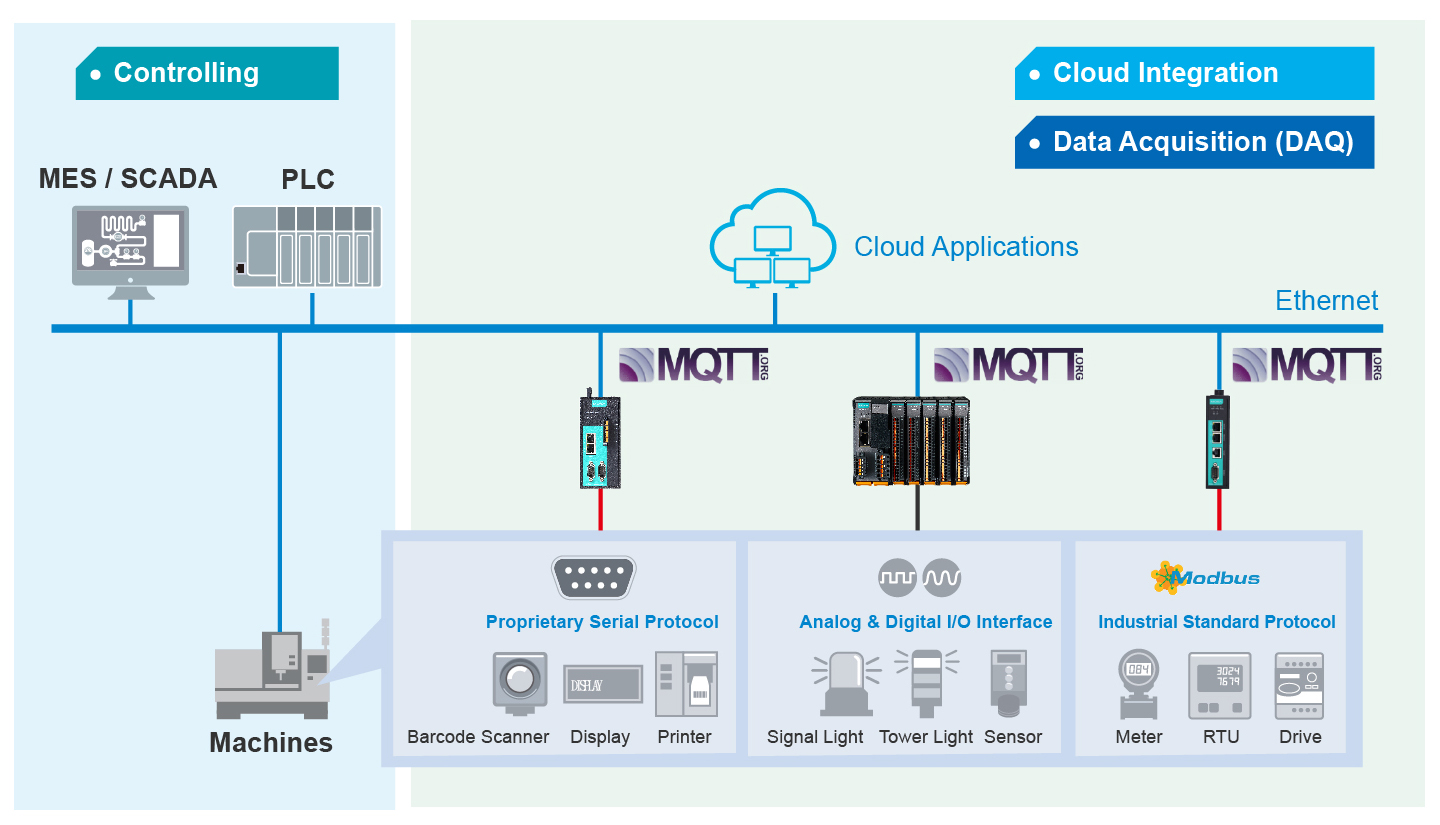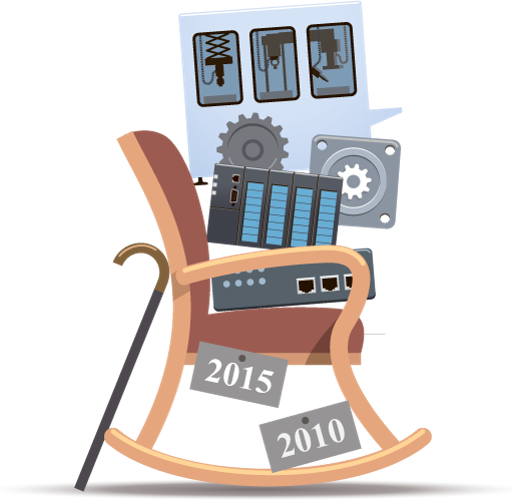Simplyfying Connectivity for Predicitve Maintenance
Predicitve maintenance is already proving to be one of the more rewarding uses of the Industrial
Internet of Things(IIoT), creating new oppertunities for businesses to reduce downtime and improve
productivity. For many businesses however, implementing predicitve maintenance has been harder
than expected. We look at ways to simplify connectivity to achieve predicitve maintenance

Predictive maintenance along with Industrial Internet of Things(IIoT) data, is creating new
oppertunities for bussinesses to reduce downtime and improve productivity, ultimately,cutting
costs and increasing profits. It aims to predict when machine failure might occur and to
prevent its occurrence by performing maintenance. Not only does predicitive maintains ensure
reliability, but it brings huge cost savings in comparison with routine or scheduled.
preventative maintenance, becuase tasks are performed only when needed.
According to a joint sutdy by the Wall Street Journal and Emerson, unplanned downtime
costs industrial manufacturers approximatley $US 50 bilion annually, and equipment failure is
the cause of 42% of this unplanned downtime. ARC Advisory Group estimates that predicitve
maintenance can reduce maintenance cost by 50% and unexpected failures by 55%.
Predicitve maintenance is already proving to be one of the mroe rewarding uses of the IIoT
for businesses. For example, a distinguished global firm that provides audit,tax and advisory
servers, leveraged AIoT (AI and IoT) technology to help an automotive engine parts
manufacturere to increase yield and build predictive maintenance. To achieve this, they added
more sensors to existing devices to collect additional data oon vibration, temperature, rotating
speed and electric current; subsequently, sending the data tto the backend AI platform. Here
through analysis, control standards were stablished, making predicitve maintenance
possible as any deviation, which could result in the production of defective products, was immediately detected.
Slow out of the Blocks
For many businesses, howeber, implementing predivitve maintenance has been disappointingly slow out of the starting blocks. In fact,
implementing predicitve maintenance has been harder than expected; making it a testing challange to obtain valuable insights from collected
data. But by now, we have come to lern that with new oppertunities come new challanges, and enabling predictive maintenance has not been
the exception. The two main challanges that managers have to deal with are performing diverse data aacquisition and deploying edge
intelligence. For the purpose of this article, we dicsuss how to address diverse data acquisition.
Just Too Many Connections To Deal With
The beuaty of predictive maintenance lies in the unlocking of valuable insights from diverse sets of data to prevent downtime. Hence,
manufacturers need to acquire columes of new data by adding more sneors and devices to legacy machnies for analysis and intelligence
software development in the cloud or IT systems. On paper, everything seems straightforward but the problem comes in that the interfaces and
protocols of legacy machnies are vaired. For example, barcode scanner and displays use RS-232,RS-422, or RS-485 serial interfaces while
tower lights and signal lights use analog and digital I/O interfaces, respectively. What´s more, industrial standard protocols, such as Modbus
EtherNet/IP and PROFIBUS, need to be used simultaneously in a Network.
Commonly, most businesses tend to just use familiar PLCs or communication modules to connect devices of different proprietary protocols as
well as different analog and digital I/O interfaces, installing edge gateways to convert industrial standard protocols to online SCADA, cloud or IT
systems in the absence of cloud communication abillities.
However we know that PLCs are assigned for control jobs such as storing procedures, sequential or position control, time counting, and input
or output control. The additional data acquisition and edge-to-cloud protocol converion jobs maybe minor in the case of just one or two points,
but will bring major challanges to the fore in managing diverse connectivity on a large scale.
The Issues
A closer look atthe challange at hand shows that three issues are comlicating things to get predictive maintenance out of the starting blocks.
Simplifying Diverse Data Acquisition
Even when so many protocols and interfaces are involved, system integrators ideally want to keep everything about connectivity in a network,
sweet and simple, espacially when it comes to data acquisition from multiple, diverse sources. For them to keep things as simples as possible
seeking out ready-to-run connectivity offering that easily convert protocols of multiple field devices, incuding serial, I/O, Modbus, and
EtherNet/IP to MQTT is strongly advised.MQTT is the most widely used protocol for cloud connectivity and enables communication with
intelligent software and systems in private and public cloud platforms, such as Azure and Alibaba Cloud.
Other key considerations for connectivity must inclue diagnostics tools that ensurethe accuracy of setting and a connection loss buffer
function that avoids packet loss when the cloud connection gets disconnected.
With regard to troubleshooting issues, devices troubleshooting tools are definite deal breaker. Embedded traffic monitoring and diagnostic
information functions, along with a conveniet web console, make troubleshootin easy.

Moxa´s Solutions
oppertunities for bussinesses to reduce downtime and improve productivity, ultimately,cutting
costs and increasing profits. It aims to predict when machine failure might occur and to
prevent its occurrence by performing maintenance. Not only does predicitive maintains ensure
reliability, but it brings huge cost savings in comparison with routine or scheduled.
preventative maintenance, becuase tasks are performed only when needed.
According to a joint sutdy by the Wall Street Journal and Emerson, unplanned downtime
costs industrial manufacturers approximatley $US 50 bilion annually, and equipment failure is
the cause of 42% of this unplanned downtime. ARC Advisory Group estimates that predicitve
maintenance can reduce maintenance cost by 50% and unexpected failures by 55%.
Predicitve maintenance is already proving to be one of the mroe rewarding uses of the IIoT
for businesses. For example, a distinguished global firm that provides audit,tax and advisory
servers, leveraged AIoT (AI and IoT) technology to help an automotive engine parts
manufacturere to increase yield and build predictive maintenance. To achieve this, they added
more sensors to existing devices to collect additional data oon vibration, temperature, rotating
speed and electric current; subsequently, sending the data tto the backend AI platform. Here
through analysis, control standards were stablished, making predicitve maintenance
possible as any deviation, which could result in the production of defective products, was immediately detected.
Slow out of the Blocks
For many businesses, howeber, implementing predivitve maintenance has been disappointingly slow out of the starting blocks. In fact,
implementing predicitve maintenance has been harder than expected; making it a testing challange to obtain valuable insights from collected
data. But by now, we have come to lern that with new oppertunities come new challanges, and enabling predictive maintenance has not been
the exception. The two main challanges that managers have to deal with are performing diverse data aacquisition and deploying edge
intelligence. For the purpose of this article, we dicsuss how to address diverse data acquisition.
Just Too Many Connections To Deal With
The beuaty of predictive maintenance lies in the unlocking of valuable insights from diverse sets of data to prevent downtime. Hence,
manufacturers need to acquire columes of new data by adding more sneors and devices to legacy machnies for analysis and intelligence
software development in the cloud or IT systems. On paper, everything seems straightforward but the problem comes in that the interfaces and
protocols of legacy machnies are vaired. For example, barcode scanner and displays use RS-232,RS-422, or RS-485 serial interfaces while
tower lights and signal lights use analog and digital I/O interfaces, respectively. What´s more, industrial standard protocols, such as Modbus
EtherNet/IP and PROFIBUS, need to be used simultaneously in a Network.
Commonly, most businesses tend to just use familiar PLCs or communication modules to connect devices of different proprietary protocols as
well as different analog and digital I/O interfaces, installing edge gateways to convert industrial standard protocols to online SCADA, cloud or IT
systems in the absence of cloud communication abillities.
However we know that PLCs are assigned for control jobs such as storing procedures, sequential or position control, time counting, and input
or output control. The additional data acquisition and edge-to-cloud protocol converion jobs maybe minor in the case of just one or two points,
but will bring major challanges to the fore in managing diverse connectivity on a large scale.
The Issues
A closer look atthe challange at hand shows that three issues are comlicating things to get predictive maintenance out of the starting blocks.
| The Costs | Time-comsuming | Troubleshooting |
 |  |  |
| The nedd for additional PLC modules for protocol converters and I/Os can be prohibitively expensive. In addition, legacy PLC may not have the capability to communicate in cloud protocols such as MQTT or AMQP | Extra configuration and programming efforts are requried to realize edge-to- cloud connectivity from scratch, and they have often proven to be time-consuming in large deployments | Troubleshooting can also add to engineers frustraion as it is very difficult and time-consuming to pinpoin all the communication issues caused by incorrect software parameters, such as slave IDs and register addresses, or incorrect command configurations in large-scale networks |
Simplifying Diverse Data Acquisition
Even when so many protocols and interfaces are involved, system integrators ideally want to keep everything about connectivity in a network,
sweet and simple, espacially when it comes to data acquisition from multiple, diverse sources. For them to keep things as simples as possible
seeking out ready-to-run connectivity offering that easily convert protocols of multiple field devices, incuding serial, I/O, Modbus, and
EtherNet/IP to MQTT is strongly advised.MQTT is the most widely used protocol for cloud connectivity and enables communication with
intelligent software and systems in private and public cloud platforms, such as Azure and Alibaba Cloud.
Other key considerations for connectivity must inclue diagnostics tools that ensurethe accuracy of setting and a connection loss buffer
function that avoids packet loss when the cloud connection gets disconnected.
With regard to troubleshooting issues, devices troubleshooting tools are definite deal breaker. Embedded traffic monitoring and diagnostic
information functions, along with a conveniet web console, make troubleshootin easy.

Moxa´s Solutions
- The MQTT-ready NPort Serial device servers easily connect serial to MQTT/Azure/Alibaba Cloud. Their diagnostics tools ensure the
accuracy off settings while their connection loss buffer function can avoid packe loss when the cloud connection is disconnected. - The ioThinx Series Moxa´s MQTT-ready advanced modular Remote I/O supports I/O-to-IT/Ot protocol conversion, such as Modbus
TCP for OT engineers as well as SNMP and RESTful API for IT engineers. - Moxa´s MQTT-ready MGate industrial protocol gateways simply convert protocols such as Modbus and EtherNET/IP to
MQTT/Azure/Alibaba Cloud. Their embedded traffic monitoring and diagnostic information functions and convenient web-console make
troubleshooting easy












